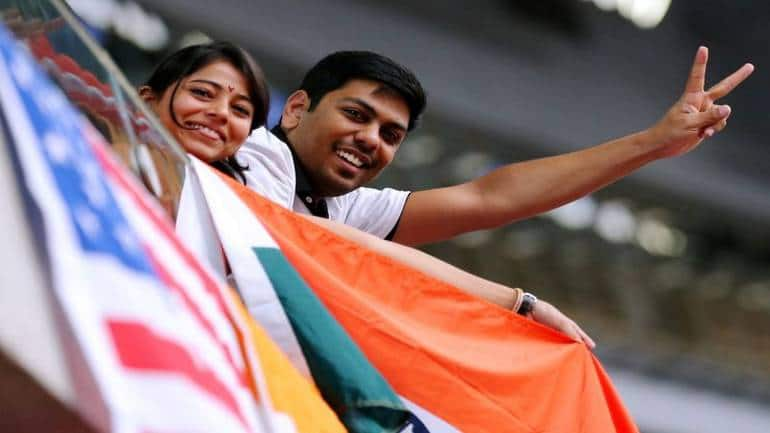The Economy survey for 2022-23 has projected India’s GDP growth for the next fiscal 2023-24 in a range of 6-6.8 percent.

Finance Minister Nirmala Sitharaman tabled the Economic Survey 2022-23 in the Parliament on January 31, a day ahead of Union Budget which will be presented by her on February 1. The Survey for 2022-23 has projected India’s GDP growth for the next fiscal 2023-24 in a range of 6-6.8 percent. Let’s take a look at the highlights of the Economic Survey 2022-23.

On steel production | The country is now a global force in steel production and the second largest crude steel producer in the world. The steel sector’s performance in the current fiscal year has been robust, with cumulative production and consumption of finished steel at 88 MT and 86 MT, respectively.

On pharma sector | Cumulative foreign direct investment (FDI) in the pharma sector crossed the $ 20 billion mark in September 2022. Further, FDI inflows have increased four-fold over five years until September 2022, to $ 699 million. Growth in pharmaceutical output has slowed due to an unfavourable base effect and the waning of the COVID-19 pandemic

On health sector | Central and state governments’ budgeted expenditure on the health sector reached 2.1 percent of GDP in FY23 (Budget Estimate) and 2.2 percent in FY22 (Revised Estimate), against 1.6 percent in FY21.

On inflation | Retail inflation is back within the Reserve Bank of India’s (RBI) target range in November 2022. While the year 2022 witnessed a return of high inflation in the advanced world after three to four decades, India caps the rise in prices. The RBI’s anchoring of inflationary expectations through forward guidance and responsive monetary policy has helped guide the trajectory of inflation in the country.

On GST collection | GST revenues have improved due to rapid economic recovery post-pandemic, drive against GST evaders and fake bills along with many systemic changes introduced, rate rationalisation.

Ayushman Bharat Scheme | Nearly 22 crore beneficiaries have been verified under the Ayushman Bharat Scheme as on January 4, 2023. Over 1.54 lakh Health and Wellness Centres have been operationalised across the country under Ayushman Bharat. (File Image)

Agriculture and food management | India stands at the forefront to promote millets through the International Year of Millets initiative. MSP for all mandated crops is fixed at 1.5 times of all India weighted average cost of production since 2018. Free food grains to about 81.4 crore beneficiaries under the National Food Security Act for one year from January 1, 2023. About 11.3 crore farmers were covered under the Scheme in its April-July 2022-23 payment cycle. Organic Farming has being promoted through Farmer Producer Organisations (FPO) under the Paramparagat Krishi Vikas Yojana (PKVY). (Image: Reuters)

Climate change and environment | India declared Net Zero Pledge to achieve net zero emissions goal by 2070. The country achieved its target of 40 percent installed electric capacity from non-fossil ahead of 2030. Further, the National Green Hydrogen Mission will enable India to be energy independent by 2047. India becoming a favoured destination for renewables; investments in seven years stand at $ 78.1 billion. 62.8 lakh individual household toilets and 6.2 lakh community and public toilets constructed (August 2022) under the National Mission on Sustainable Habitat.

Social infrastructure and employment | Survey highlights the findings of the 2022 report of the UNDP on Multidimensional Poverty Index which says that 41.5 crore people exited poverty in India between 2005-06 and 2019-20. The eShram portal developed for creating a National database of unorganised workers, which is verified with Aadhaar. As on December 31, 2022, a total of over 28.5 crore unorganised workers have been registered on eShram portal. Labour markets have recovered beyond pre-Covid levels, in both urban and rural areas, with unemployment rates falling from 5.8 percent in 2018-19 to 4.2 percent in 2020-21. The year FY22 saw improvement in Gross Enrolment Ratios (GER) in schools and improvement in gender parity. GER in the primary-enrolment in class I to V as a percentage of the population in age 6 to 10 years – for girls as well as boys have improved in FY22. More than 220 crore COVID-19 vaccine doses were administered.(Representational image)

GatiShakti | The PM GatiShakti National Master Plan creates comprehensive database for integrated planning and synchronised implementation across ministries/ departments. It aims to improve multimodal connectivity and logistics efficiency while addressing the critical gaps for the seamless movement of people and goods. (Representative Image)

Production Linked Incentive schemes | PLI schemes are introduced across 14 categories, with an estimated capex of Rs 4 lakh crore over the next five years, to plug India into global supply chains. Investment of Rs 47,500 crore has been seen under the PLI schemes in FY22, which is 106 percent of the designated target for the year. Production/ sales worth Rs 3.85 lakh crore and employment generation of 3.0 lakh have been recorded due to PLI schemes. (Representative image)
`); } if (res.stay_updated) { $ (“.stay-updated-ajax”).html(res.stay_updated); } } catch (error) { console.log(‘Error in video’, error); } } }) }, 8000); })

